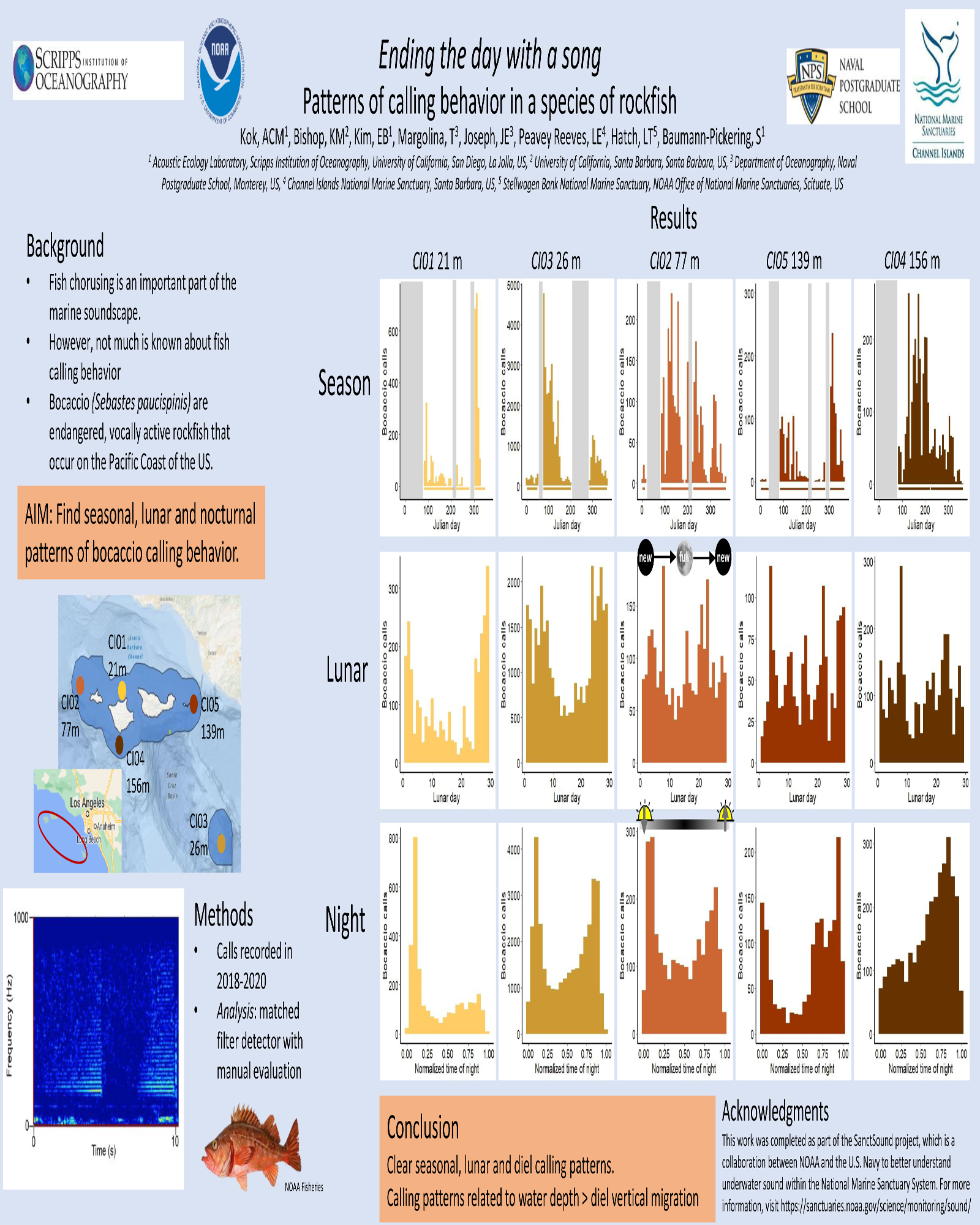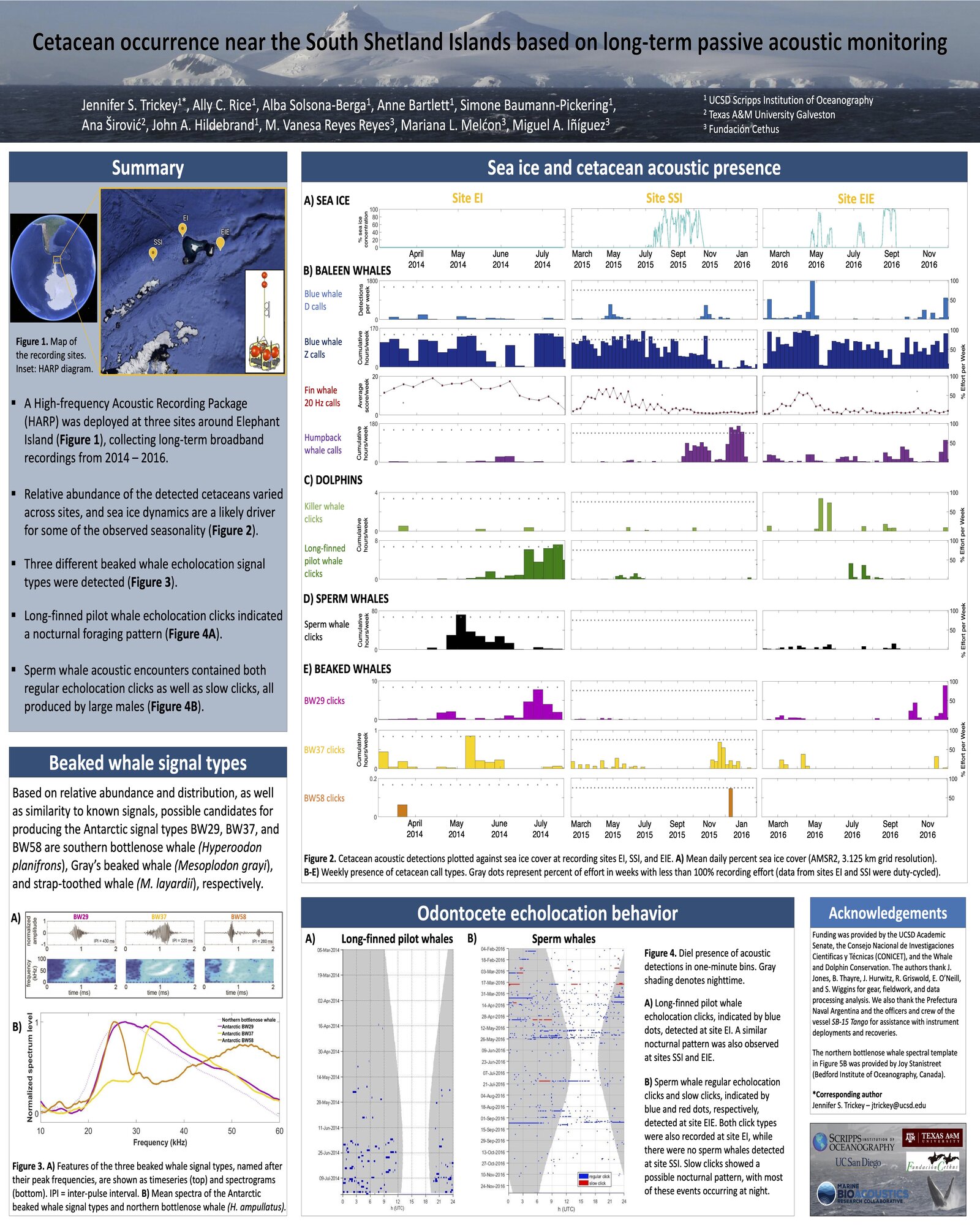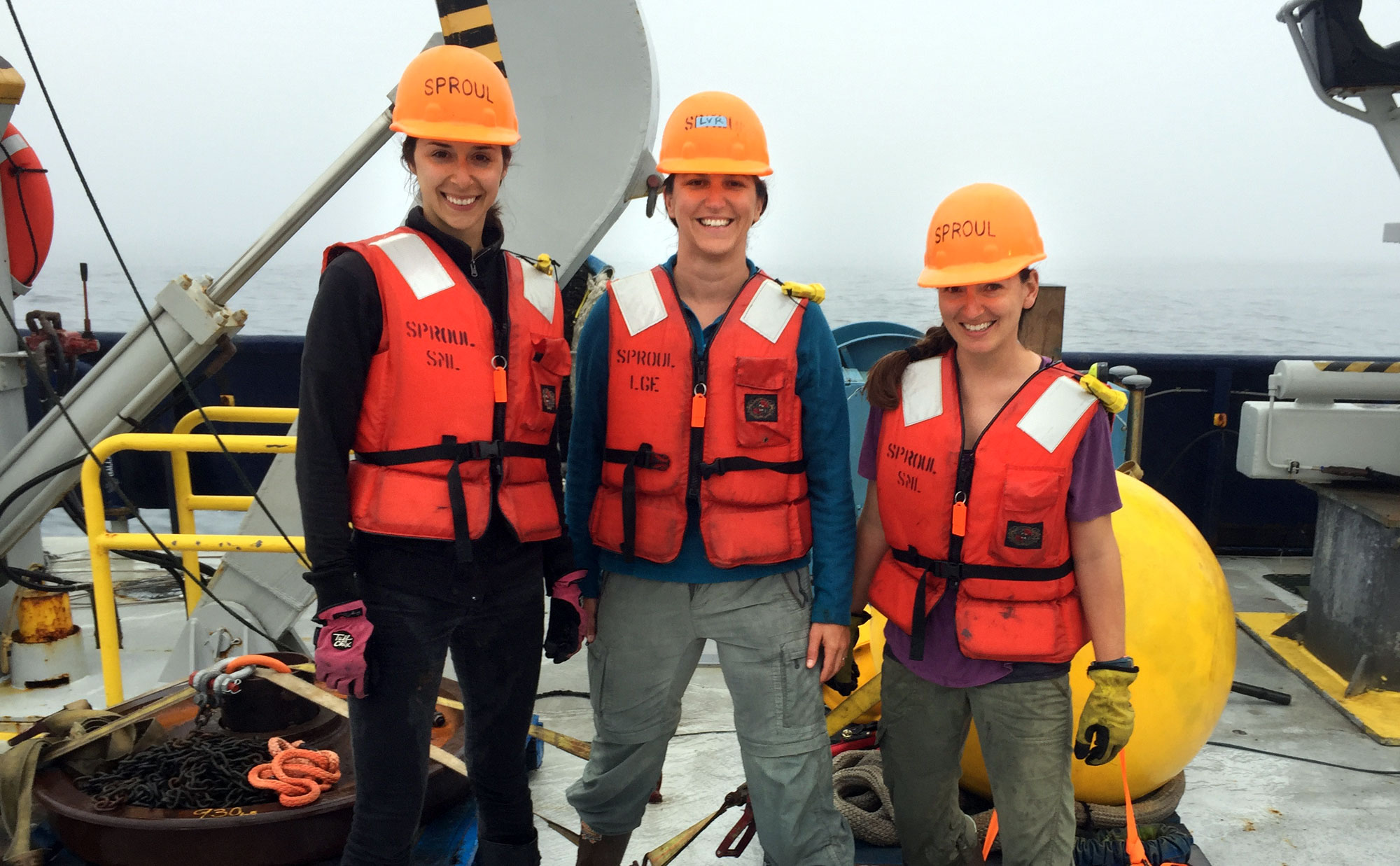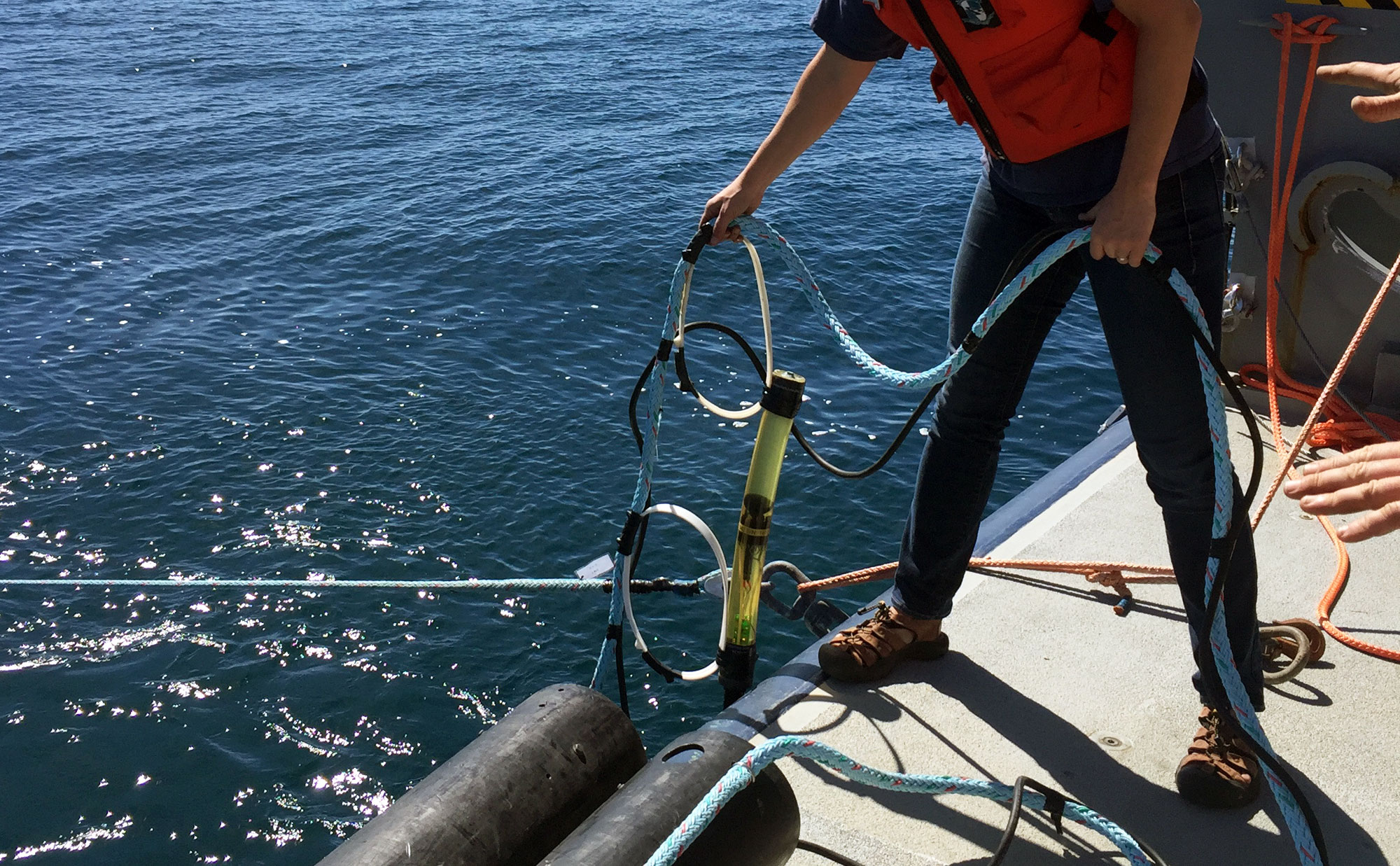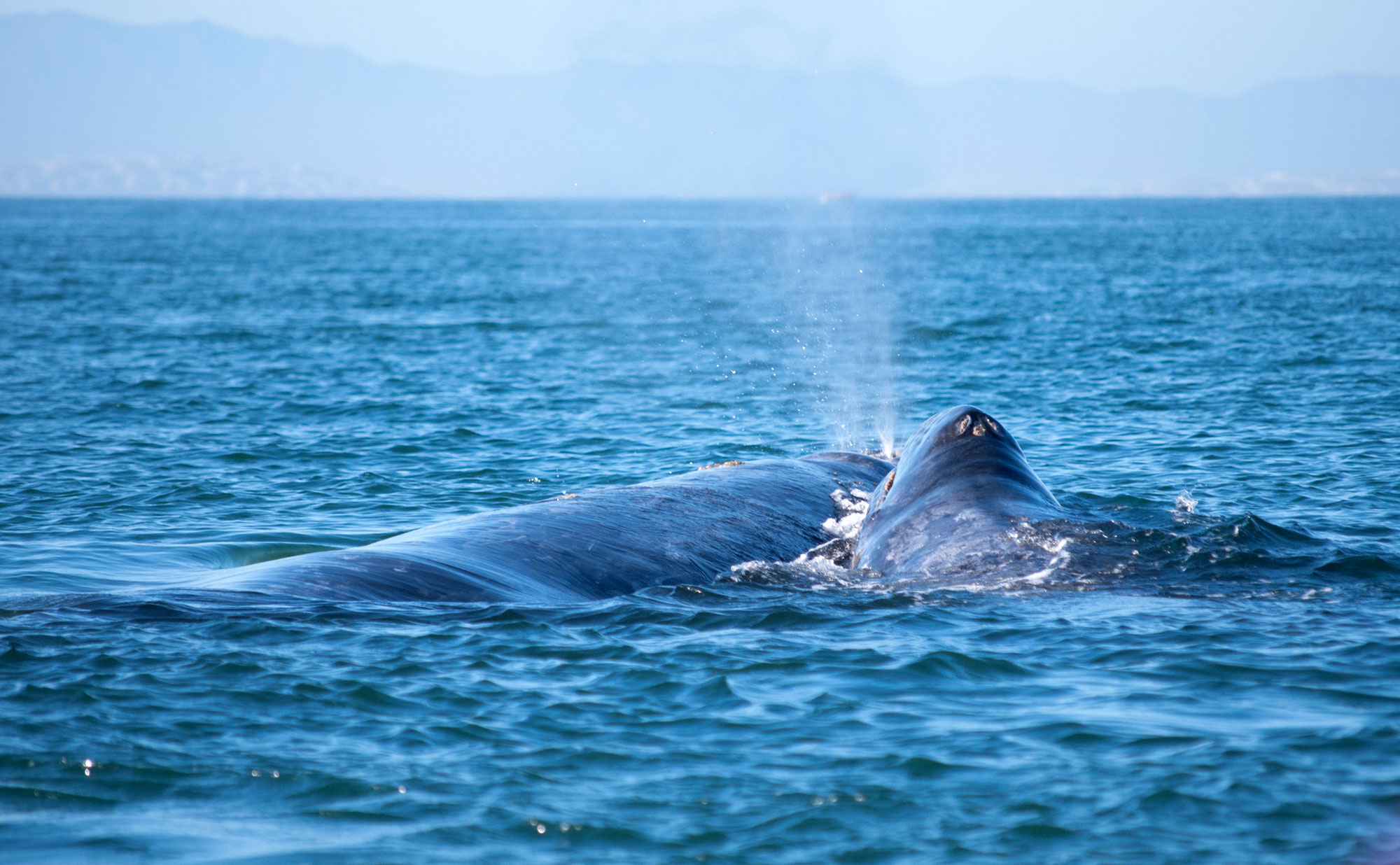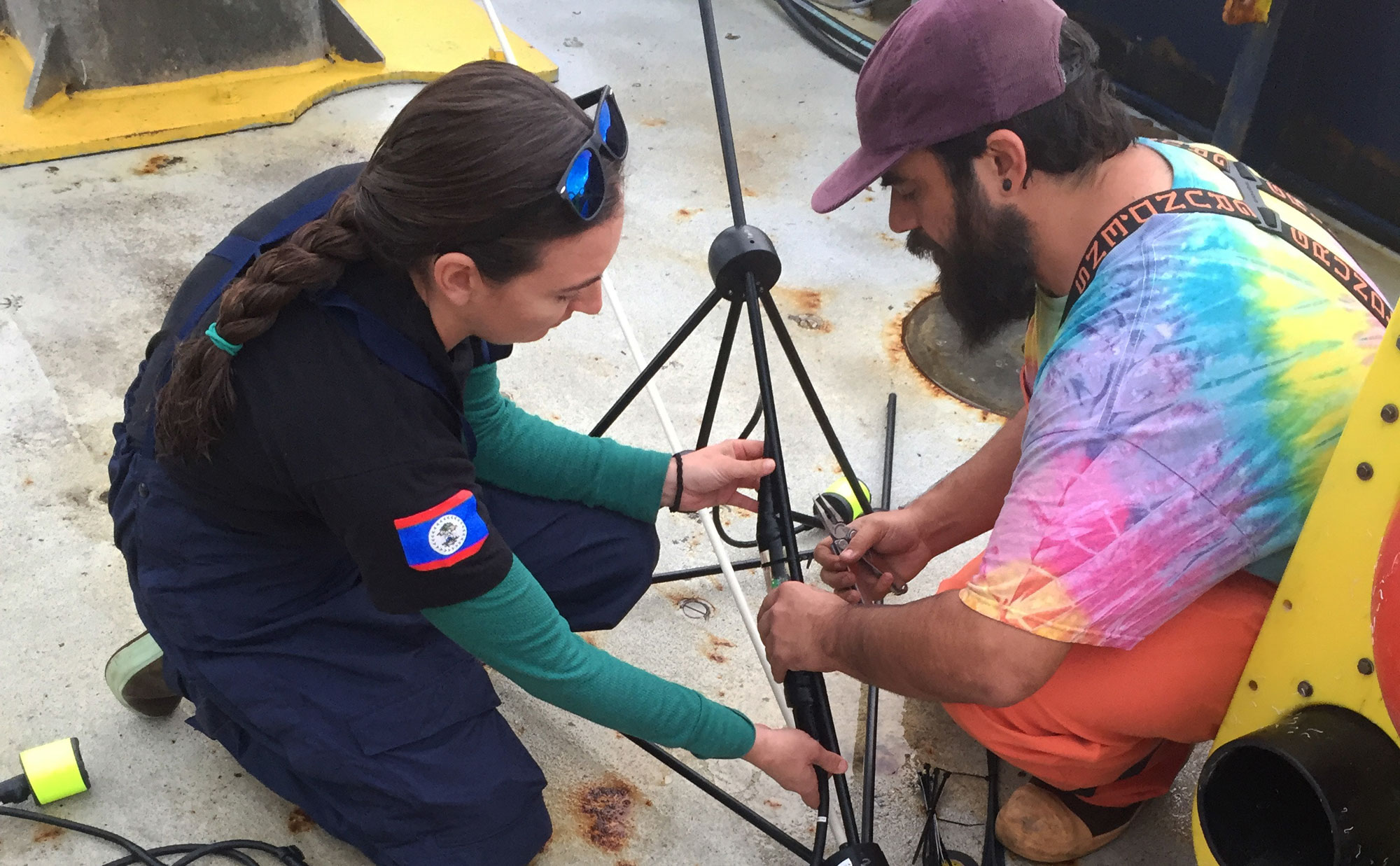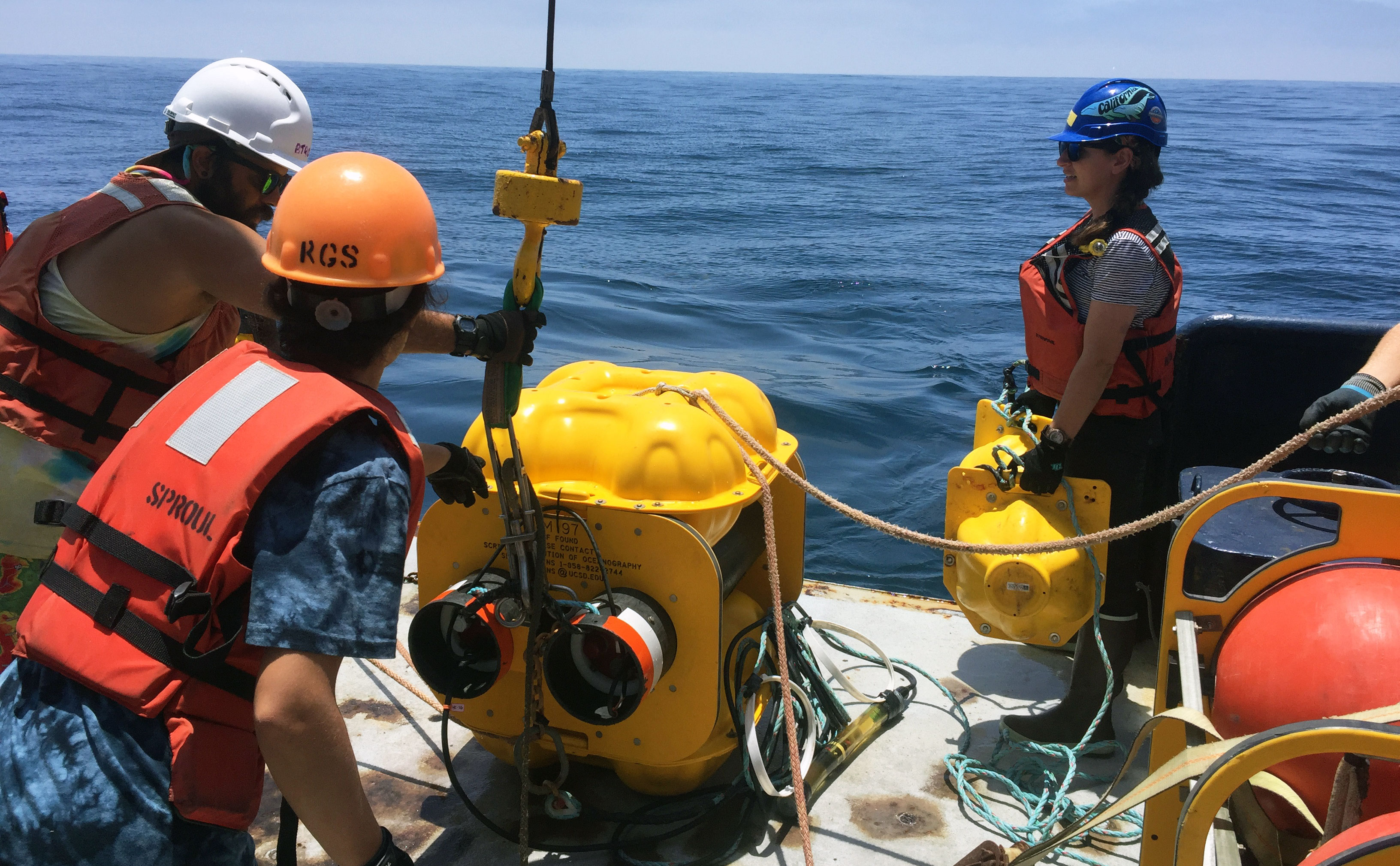GET THE LATEST NEWS ON THE LAB'S TWITTER FEED!
Research Directions
The Scripps Acoustic Ecology Laboratory investigates phenological patterns and spatial ecology of cetaceans, interactions of predators and their prey, and adaptations of animals to changes in their environment. Our goal is to contribute to the management and conservation of top predators and their ecosystem.
Environmental Effects
Long term and large dimension of environmental effects on the phenologies, movements, distributions, abundances, and behaviors of cetaceans and their prey.
Read MoreInfluence of Sound
Field and laboratory experiments on the influence of sound produced by individuals or groups of animals shaping organismal interactions and community functions.
Read MoreDevelopment of Instruments and Methods
Measurements for the other objectives will continuously require novel tools and subsequently advanced analysis methods.
Read MoreWith marine ecosystems currently undergoing global change, the physical environment is modified and established geographic distribution, phenologies and organismal interactions will be revised. Further anthropogenic stressors such as overfishing at increasingly deeper depths, exploitation of hydrocarbons and minerals, and pollution, including noise, and waste disposal aggravate the situation. These physical stressors in the environment may bring physiological traits to their adaptive limits. Some cetacean species will be able to keep up with the pace and extent of the necessary adaption and may even benefit from it with new habitats opening up for them, while others will be much more vulnerable.
We need to establish long-term and large spatial scale datasets and innovative methods to detect, quantify, and describe effects on daily and seasonal behavior, long-term trends in distribution and abundance, and animal-environment interactions. These will serve as a basis to identify and comprehend ecosystem adaptations and to consequently adjust protected species management strategies.
Research Interests
Principle Investigator: Dr. Simone Baumann-Pickering
Dr. Simone Baumann-Pickering is an Associate Professor at Scripps Institution of Oceanography. Her research covers time-series analysis of phenological patterns and spatial ecology of pelagic nekton, interactions of predators and prey, and adaptations of animals to natural and anthropogenic changes in the environment.
She has carried out collaborative ecological research using advanced acoustical and environmental sampling technologies with indirect and direct applications to fisheries management.

The latest research
Our most recent publications and posters
The Deep Ocean Observing Strategy: Addressing Global Challenges in the Deep Sea Through Collaboration
Smith LM, Cimoli L, LaScala-Gruenewald D, Pachiadaki M, Phillips B, Pillar H, Stopa JE, Baumann-Pickering S, Beaulieu SE, Bell KLC, Harden-Davies H, Heimbach P, Howe B, Janssen F, Levin LA, Ruhl HA, Soule A, Stocks K, Vardaro MF, Wright DJ (2022). Marine Technology Society. 10.4031/MTSJ.56.3.11
Echolocation repetition rate as a proxy to monitor population structure and dynamics of sperm whales
Solsona-Berga A, Posdaljian N, Hildebrand, JA, Baumann-Pickering S (2022). Remote Sens Ecol Conserv. 10.1029/2021JC018180
Monthly to decadal variability of mesoscale stirring in the California Current System: Links To Upwelling, Climate Forcing, And Chlorophyll Transport
Giddings A, Franks PJ, Baumann-Pickering S (2022). Journal of Geophysical Research: Oceans, 127, e2021JC018180. 10.1029/2021JC018180
Echolocation click discrimination for three killer whale ecotypes in the Northeastern Pacific
Leu AA, Hildebrand JA, Rice A, Baumann-Pickering S, Frasier KE (2022). The Journal of the Acoustical Society of America 151, 3197. 10.1121/10.0010450
Discriminating and classifying odontocete echolocation clicks in the Hawaiian Islands using machine learning methods
Ziegenhorn MA, Frasier KE, Hildebrand JA, Oleson EM, Baird RW, Wiggins SM, Baumann-Pickering S (2022). PLOS One. 10.1371/journal.pone.0266424
Update on frequency decline of Northeast Pacific blue whale (Balaenoptera musculus) calls
Rice A, Širović A, Hildebrand JA, Wood M, Carbaugh-Rutland A, Baumann-Pickering S (2022). PLOS One. 10.1371/journal.pone.0266469
Ending the day with a song - Patterns of calling behavior in a species of rockfish
Kok ACM, Bishop KM, Kim EB, Margolina T, Joseph JE, Peavey Reeves LE, Hatch LT, Baumann-Pickering S (2020). Association for the Study of Animal Behaviour meeting, December 3-4.
Diel Patterns of Bocaccio Rockfish Communication
Bishop KM, Kok ACM, Kim EB, Margolina T, Joseph JE, Peavey LE, Hatch LT, Baumann-Pickering S (2020). AGU December 7-11. Scripps Undergraduate Research Fellowship (SURF).
Evaluation of a Neural Network for Automated Classification of Beaked Whale Echolocation Clicks
Field C, Solsona-Berga A, Cohen R, Trickey JS, Mueller-Brennan L, Ackerknecht T, Frasier KE, Cholewiak D, Van Parjis S, Baumann-Pickering S (2020). Scripps Undergraduate Research Fellowship (SURF).
Cetacean occurrence near the South Shetland Islands based on long-term passive acoustic monitoring
Trickey JS, Rice AC, Solsona-Berga A, Bartlett A, Baumann-Pickering S, Širović A, Hildebrand JA, Reyes Reyes MV, Melcón ML, Iñíguez MA (2020). Ocean Sciences Meeting, February 16-21, San Diego, California.



